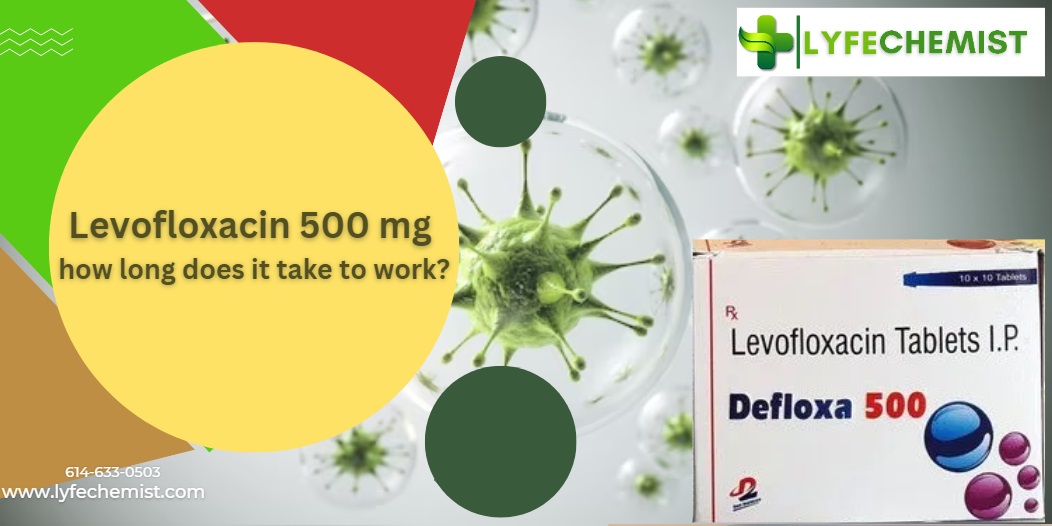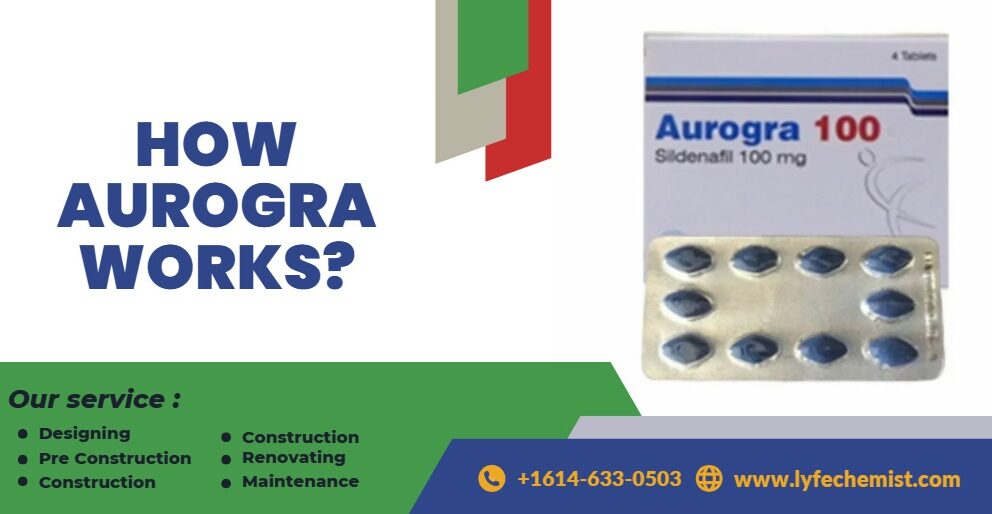This infection may occur in different parts of your body, such as the lungs, kidneys, eyes, skin, liver, etc., which range from minor ailments to serious problems. Healthcare providers prescribe Levofloxacin to prevent this type of infection. This medication is an antibiotic. This antibiotic is prescribed to prevent any kind of bacterial infection. It can fight certain bacteria in any part of the body. Hence it is now a very preferred drug by healthcare providers.
Now the question is, how long does Levofloxacin take to work?
The effectiveness of Levofloxacin 500 varies from person to person. The duration of action of this medicine also depends on the user’s health condition and how severe their infection is. Symptoms begin to improve within a few days of taking the relatively strong antibiotic. However, the user is advised to complete the full course of antibiotics. After taking Levofloxacin 500mg, it reaches peak levels within one to two hours. However, it can take up to three days for symptoms of infection to begin to resolve.
Well, it is essential to remember that Levofloxacin isn’t a miracle drug. It usually takes some time to work. It is a complex medication with possible side effects and drug interactions. Before starting to use it, you should know about Levofloxacin and how it’s used.
What is levofloxacin?
Belonging to the antibiotic group, Levofloxacin is prescribed to treat bacterial infections of the lungs, urinary tract, kidneys, sinuses, and skin. Doctors often prescribe antibiotics to treat the problems like pneumonia, sinusitis, bronchitis, or prostatitis.
This multipurpose antibiotic comes in different forms, such as oral, intravenous, or ophthalmic formulations. According to Justin Friedlander, a urologist at Einstein Healthcare Network, this medicine can be used to treat bacterial infections of different organ systems. Whichever part is used, it very effectively prevents this infection.
Levofloxacin is also a generic prescription drug that comes from the group of antibiotics known as fluoroquinolone, which work by blocking enzymes necessary for bacterial growth.
What is Levofloxacin used for?
Researchers say this medication works great against bacteria such as e. Koli, S. Aureus and S. pneumonia etc.
Levofloxacin is often prescribed to prevent, such as:
- Acute worsening (exacerbation) of chronic bronchitis
- Bacterial pneumonia
- Complicated and uncomplicated urinary tract infections
- Kidney infections (such as pyelonephritis)
- Skin infections
- Sinus infections
- worsening of chronic bronchitis
- chronic prostate infection
- urinary tract infections
- pyelonephritis (kidney infection)
- inhalational anthrax
- plague
The medicine can also be used to prevent plague, post-exposure anthrax, and eye infection caused by bacteria. Also, doctors prescribe certain sexually transmitted diseases, especially chlamydia. And it has shown efficacy in this treatment.
Side Effects of Levofloxacin
If you are between 18 and 60 years of age, you can take this medicine. But, in some cases, it causes some side effects.
Normal side effects:
- Headache,
- insomnia,
- nausea,
- diarrhea,
- constipation, and
- abdominal pain.
Serious side effects
- Levofloxacin and other fluoroquinolone are associated with tendonitis and tendon rupture, peripheral neuropathy (nerve pain in fingers and toes), and central nervous system effects. These side effects can occur at any time and in any patient after starting Levofloxacin. If you notice any of these, stop immediately and tell your doctor. In many cases, he may suggest stopping all fluoroquinolone drug use in the future. Individuals over 60 years of age, taking corticosteroids, or with a history of organ transplantation are at increased risk of tendonitis and tendon rupture. They should also avoid this medicine.
- People with high blood sugar levels may take it carefully, as the medicine disturbs blood glucose levels. So careful monitoring of blood glucose is required regularly.
- The medicine may cause photosensitivity reactions and severe sunburn. So you should avoid sun exposure or use a soft cloth and sunglass when you have to go outside in day time.
- It may increase muscle weakness if taken by a person suffering from myasthenia gravis.
How to take Levofloxacin 500 mg to get the best result
If you want the quick result from Levofloxacin 500 mg, then you need to take it properly as prescribed by the doctor
Do not take more dose than the prescription dose and do not take for a longer duration than your doctor suggested. You can get the Medication Guide on the label of the table. Read and follow the instructions very carefully. If you have any confusion, ask the medical practitioners or pharmacist. You have been recommended to take Levofloxacin oral liquid 1 hour before or 2 hours after your meal. Measure your dose of the liquid medicine with a marked measuring spoon, oral syringe, or medicine cup. Do not use the house spoon. Levofloxacin tablets can be taken after a meal or on an empty stomach.
It is best to take the tablet with a full glass of water; you need to take at least 8 ounces of water. Doctors usually suggest drinking extra water, as it will help prevent some unwanted effects of the medication.
The medicine works best when it is in the blood in the right amount regularly. No dose should be missed to maintain the dose. Also, whenever taking day and night, doses should be taken equally spaced. For example, if you are told to take one dose every day, try to take it at the same time every day.
Levofloxacin dosage
Levofloxacin tablets are available in 250, 500, or 750 mg. The doctor suggests taking one tablet of this dose every 24 hours for five to 10 days. As a strong antibiotic, the medicine may start working and improving the symptoms within a few days after taking it. However, to get the utmost benefit, you must complete the full course of antibiotics as your healthcare provider prescribes. Even if you feel better sooner than expected, you should not stop the dose.
- For oral dosage form (tablets):
- Adults and children above 6 months of age or weighing 50 kilograms (kg) or more can take Levofloxacin 500 milligrams (mg) daily for 60 days.
- Children 6 months of age or weighing 30 kg can take Levofloxacin 250 mg every 12 hours for 60 days.
- The doctor should determine the dose and duration for Children below 6 months of age or weighing less than 30 kg.
Conclusion
It is a powerful antibiotic. You need to take it very carefully. It is not suitable for people with myasthenia gravis, heart problems, or children. It is also risky for those who take inhalation anthrax or plague preventive medicine. It can create a problem for people with weak kidneys. If you have any of these problems, immediately inform your doctor. Sometimes, a dose reduction may be required in these patients because excess use of the medicine can cause liver damage or heart rhythm disturbances.
Levofloxacin may cause reactions with antacids or drugs containing iron or zinc. So these medicines should be administered at least two hours before or two hours after taking them.







Write a comment
Your email address will not be published. All fields are required